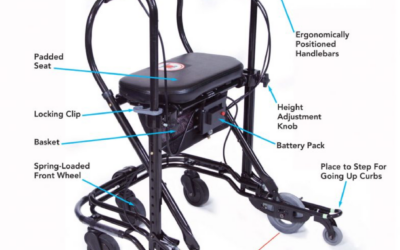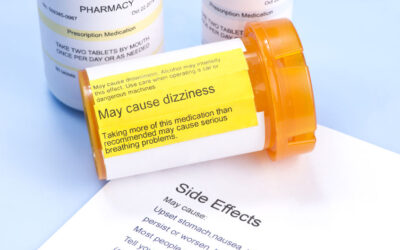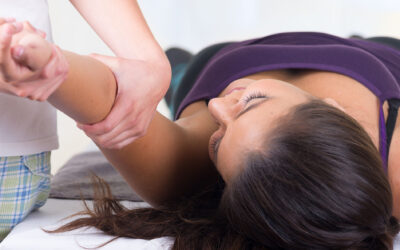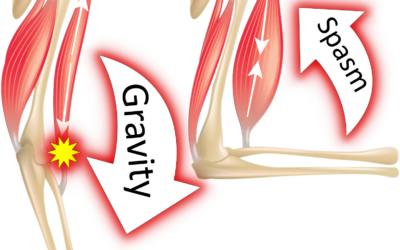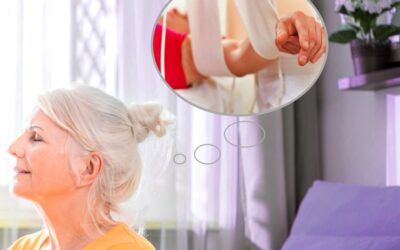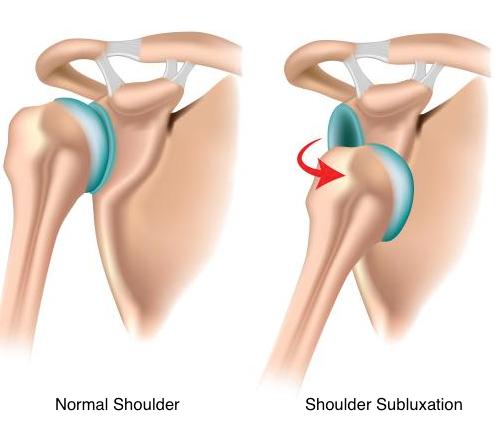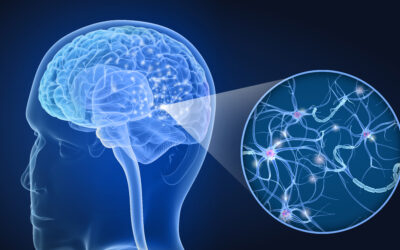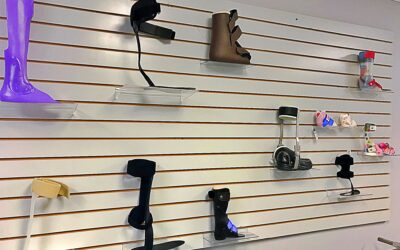HIIT for Stroke Recovery
Boost brain rewiring, improve movement, and speed recovery with short bursts of exercise.
If you’ve been on your stroke recovery journey for a while, you’ve probably heard the word neuroplasticity. Neuroplasticity is how your brain forms new connections so you can relearn skills like walking, talking, and using your hands again.
Important facts about neuroplasticity:
- It happens throughout your life, not just in the first 18 months after injury.
- Everyone with a neurological injury has the potential to improve.
- Progress isn’t just about repetition, the brain needs the right environment to rewire effectively.
What Happens in Your Brain During a Stroke?
A stroke happens when blood flow to part of your brain is blocked, or when a blood vessel in your brain bursts. This causes a sudden chaotic event inside your brain:
- Some brain cells (neurons) get damaged or die because they aren’t getting enough oxygen and nutrients.
- Other neurons around the damaged area go offline or stop working properly.
- The whole area becomes unstable and disorganized for a while.
This chaos actually primes your brain for neuroplasticity, meaning it becomes ready to rewire itself and make new connections to take over lost functions. That’s why getting into rehab as soon as possible is so important because it helps your brain take advantage of this window to start healing.
The Brain Chemicals That Make Neuroplasticity Possible
Three main “signaling molecules” help your brain form new connections:
- BDNF (Brain-Derived Neurotrophic Factor) – Supports neuron growth and survival.
- VEGF (Vascular Endothelial Growth Factor) – Promotes new blood vessel growth in the brain.
- Lactate – Acts as a backup fuel source for brain energy.
Why they matter:
- People with lower levels of these molecules have a higher risk of stroke, heart disease, and diabetes.
- After a stroke, these levels are often reduced.
- Raising them can improve brain rewiring and possibly lower the risk of another stroke.
So how do you increase these brain-boosting chemicals?
Why High-Intensity Interval Training (HIIT) Could Be a Game-Changer
Researchers studied 8 groups of stroke patients who did High-Intensity Interval Training (HIIT). They found:
- HIIT raised important brain chemicals like BDNF, which helps the brain heal
- It also increased VEGF and lactate, which improve blood flow and give the brain energy
- HIIT worked better at raising these chemicals than moderate exercise
Why does this matter?
Surprisingly, just doing repetitive exercises or task-specific training doesn’t raise these chemicals enough. What research shows is that high-intensity interval training (HIIT), which means short bursts of really hard exercise followed by rest, can boost them a lot.
HIIT is different from just “moving more”. It pushes your body hard enough to release brain-boosting chemicals that help your brain recover and improve movement.
What Does This Mean For You?
If you’re recovering from a stroke and feeling stuck, adding some form of HIIT to your routine could be the missing piece that helps your brain rewire faster and more effectively.
Sample HIIT Workout for Stroke Recovery
A safe beginner plan (based on the research) is:
- Warm-up for a few minutes.
- Exercise hard (like fast walking or cycling) for 3-4 minutes at high effort. (RPE 15–19 out of 20)
- Recover by moving slowly for 2-3 minutes. (RPE 11–13)
- Repeat 4-6 cycles.
- Do this 3 times a week.
- 30 minutes total
Important: If you want to try HIIT, especially after a stroke, please talk to your healthcare provider first. You may need medical clearance and guidance to make sure it’s safe for you.
Wrapping Up
Neuroplasticity is your brain’s natural ability to heal, but it needs the right conditions to thrive. Doing daily exercises and meaningful tasks is crucial, but don’t forget about your brain chemistry.
High-intensity interval training is an exciting, research-backed way to boost the chemicals that help your brain build new connections, and it might be just what you need to break through that recovery plateau.
Remember, recovery is a journey, and every step forward counts. Stay curious, stay consistent, and don’t hesitate to explore new tools that might help.
Articles you may be interested in
Product Spotlight: #1 Walker for Parkinson’s Disease
What is the best walker for Parkinson's disease (PD)? Maybe you are not there yet. Maybe you are hesitant to even approach the idea of a walker. Well, I have you covered. After nearly 20 years of working with people living with PD, I know how you might be feeling. The...
When to start Parkinson’s disease medication?
Due to the neurodegenerative nature of Parkinson's disease, there is no cure. While many medications claim to "treat" the disease, none actually reverse the effects of the disease. Parkinson's Disease Medication The main family of drugs useful for treating the motor...
Best Method for Stretching Spastic Muscles
Stretching spastic muscles is critical after a stroke. Spasticity is a movement disorder that causes an involuntary muscle contraction in response to lengthening. This occurs if there has been damage to the brain or spinal cord. This can make movement retraining and...
What is spasticity?
Spasticity is an involuntary muscle contraction caused by a hyperexcitability of the reflex arc that occurs due to damage to the brain or the spinal cord. Huh?? Yeah, agreed. Ok, I get it, keep it simple. Did you ever wonder why your leg seems to spaz out for no...
Does Mirror Therapy Improve Arm Function?
Mirror therapy (MT) is one of several effective treatments used to regain arm movement after a stroke. Mirror Therapy Background MT was originally designed to treat phantom limb pain with amputees. The way it worked was that it gave the person the sensation that they...
Mental Practice Helps Movement Recovery after a Stroke
Mental practice is a way of relearning movement (motor functions) by creating an image in your mind of the body performing that movement without the body actually moving. This method of enhancing performance and/or improving a motor skill has been used for decades in...
The Best Treatment for Shoulder Subluxation
A shoulder subluxation is a result of severe shoulder instability after a stroke. This can cause pain and have a negative impact on regaining active shoulder movement. What is a stroke shoulder subluxation? A shoulder subluxation is when the arm bone (humerus)...
What is Neuroplasticity?
Neuroplasticity is the brain's ability to form new connections (rewire) after a brain injury or a stroke. Recovery of motor (movement) function after a stroke involves relearning motor skills using this idea of neuroplasticity. Furthermore, this idea of brain...
Best Foot Drop Braces
Drop foot is when the muscles that lift the foot are not working properly. Hence, leading to the name, drop foot or foot drop. Needless, to say this can lead to difficulty walking. When I think of someone who has drop foot, my number one concern is the risk of...
Best Tools for Eating after Stroke
Being able to eat and prepare food without help after a stroke can help someone both physically and mentally. That being said, this might be challenging if you only have full use of one hand. Here are my top four picks that might help someone to start the process of...

